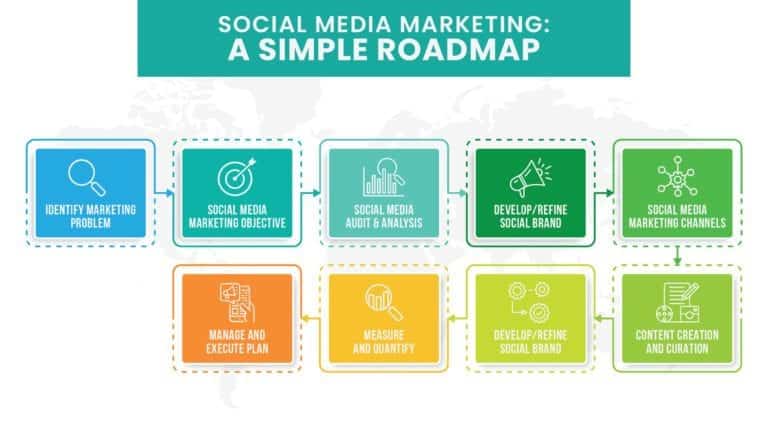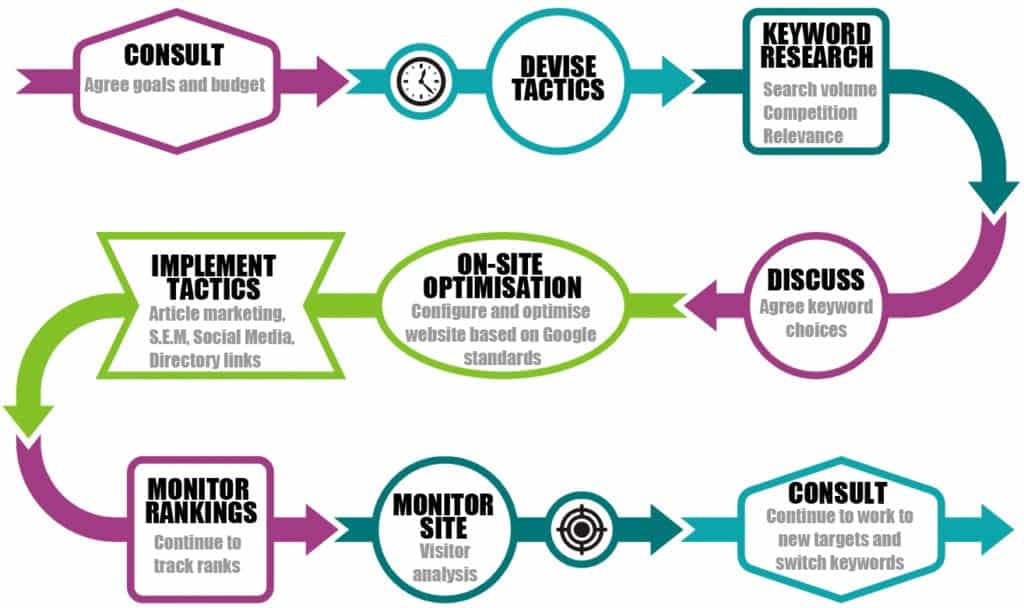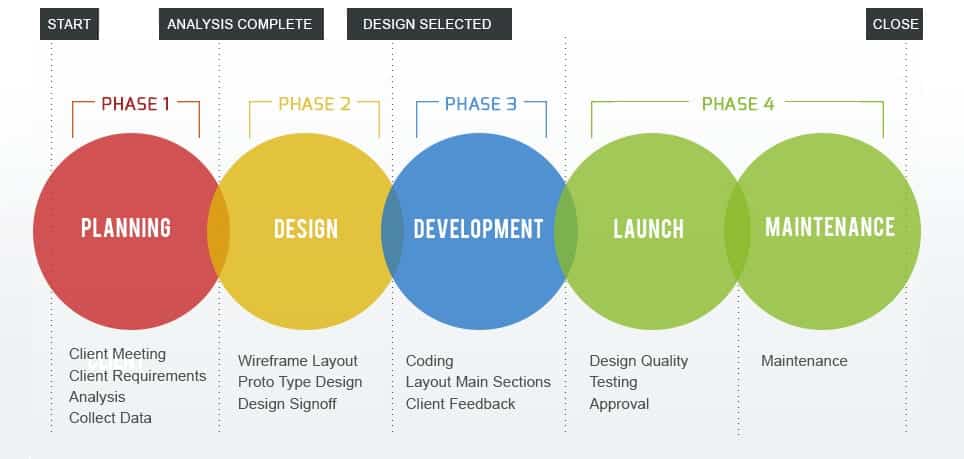
Social media management is the process of creating, scheduling, analyzing, and engaging with content posted on social media platforms like Facebook, Instagram, Twitter, LinkedIn, and others. The following are the steps involved in the social media management process:
-
Strategy: The first step in social media management is to develop a clear strategy that outlines your goals and objectives for using social media. This includes identifying your target audience, selecting the appropriate platforms to use, and determining what type of content you want to create.
-
Content creation: Once you have a strategy in place, the next step is to create engaging content that resonates with your target audience. This can include writing blog posts, creating videos or images, sharing industry news or updates, or curating third-party content that aligns with your brand.
-
Scheduling: After creating your content, it’s time to schedule it for posting on social media platforms at optimal times when your target audience is most active online. Social media scheduling tools like Hootsuite or Buffer can help automate this process.
-
Publishing: Once your content is scheduled for posting, it will automatically be published on the selected platforms at the predetermined times.
-
Monitoring and engagement: It’s important to monitor your social media channels regularly for comments or messages from followers and engage with them in real-time. This helps build relationships with customers and shows that you value their feedback.
-
Analytics: Finally, analyzing data from social media metrics like engagement rates and follower growth can help you refine your strategy over time by identifying what works best for your brand.
Overall, effective social media management requires a combination of strategy development, content creation and scheduling tools along with regular monitoring and analysis to ensure that brands are reaching their desired audiences effectively across multiple platforms.

The WordPress SEO timeline process involves a series of steps that are taken to optimize a website for search engines. Here’s a breakdown of the process:
-
Keyword research: The first step is to identify the keywords and phrases that your target audience is searching for online. This will help you create content that aligns with their interests and needs.
-
On-page optimization: Once you have identified your target keywords, it’s time to optimize your website’s pages by incorporating them into page titles, URLs, headings, meta descriptions, and content.
-
Technical optimization: This step involves optimizing technical aspects of your website like site speed, mobile responsiveness, crawlability, and security. This can be done through plugins or coding changes.
-
Content creation: Creating high-quality, engaging content on a regular basis is crucial for SEO success. This includes blog posts, videos, infographics, and other types of content that are relevant to your target audience.
-
Link building: Building high-quality backlinks from reputable sources helps increase the authority and visibility of your website in search engine results pages (SERPs).
-
Monitoring and analysis: Regularly monitoring analytics data allows you to track progress over time and adjust your strategy as needed based on what’s working best for your website.
It’s important to note that SEO is an ongoing process that requires continuous effort to maintain optimal results. While some improvements may be seen in the short term, it generally takes several months or even years to see significant improvements in rankings and traffic from search engines.

Website development is the process of creating a website from scratch, starting with an idea and ending with a fully functional website. Here’s a breakdown of the typical website development process:
-
Planning: The first step in website development is to plan out the overall structure and design of the site. This includes defining the purpose of the site, identifying the target audience, and creating a sitemap.
-
Design: Once you have a clear plan in place, it’s time to create visual mockups or wireframes that outline how the site will look and function. This includes choosing color schemes, fonts, and other design elements.
-
Development: After finalizing the design, developers can start building out the site using HTML, CSS, and other programming languages. This involves creating web pages, adding functionality like forms or e-commerce capabilities, and testing for bugs or errors.
-
Content creation: As development continues, content creators can begin crafting text copy, images, videos or audio files that will be used on the site.
-
Testing: Once everything has been built out and all content has been added to the site, it’s time to test it thoroughly for usability issues or technical problems.
-
Launch: After all testing has been completed successfully and any necessary fixes have been made, it’s time to launch your new website!
-
Maintenance: Maintaining your website is crucial for ensuring that it continues to run smoothly over time. This includes regular updates to software or plugins used on your site as well as ongoing content creation activities.
Overall, developing a website involves careful planning, creative design thinking along with programming skills to build out a functional product that meets user needs while staying within established budgetary constraints.